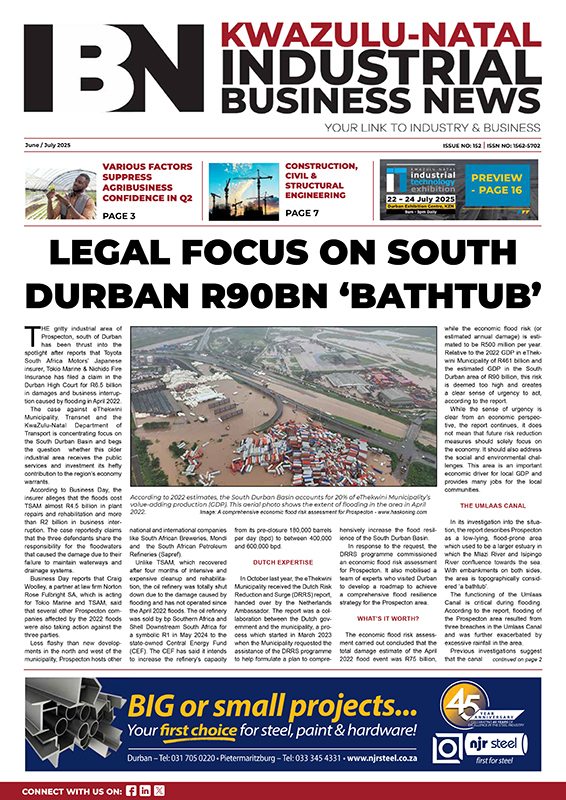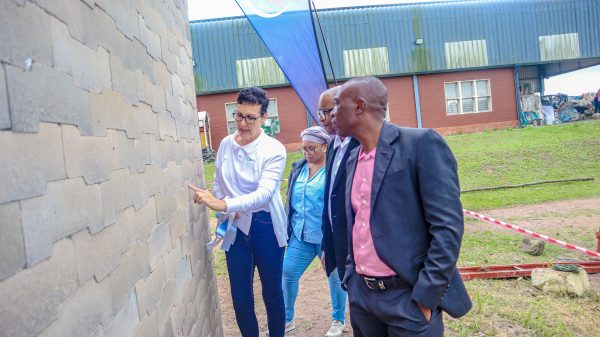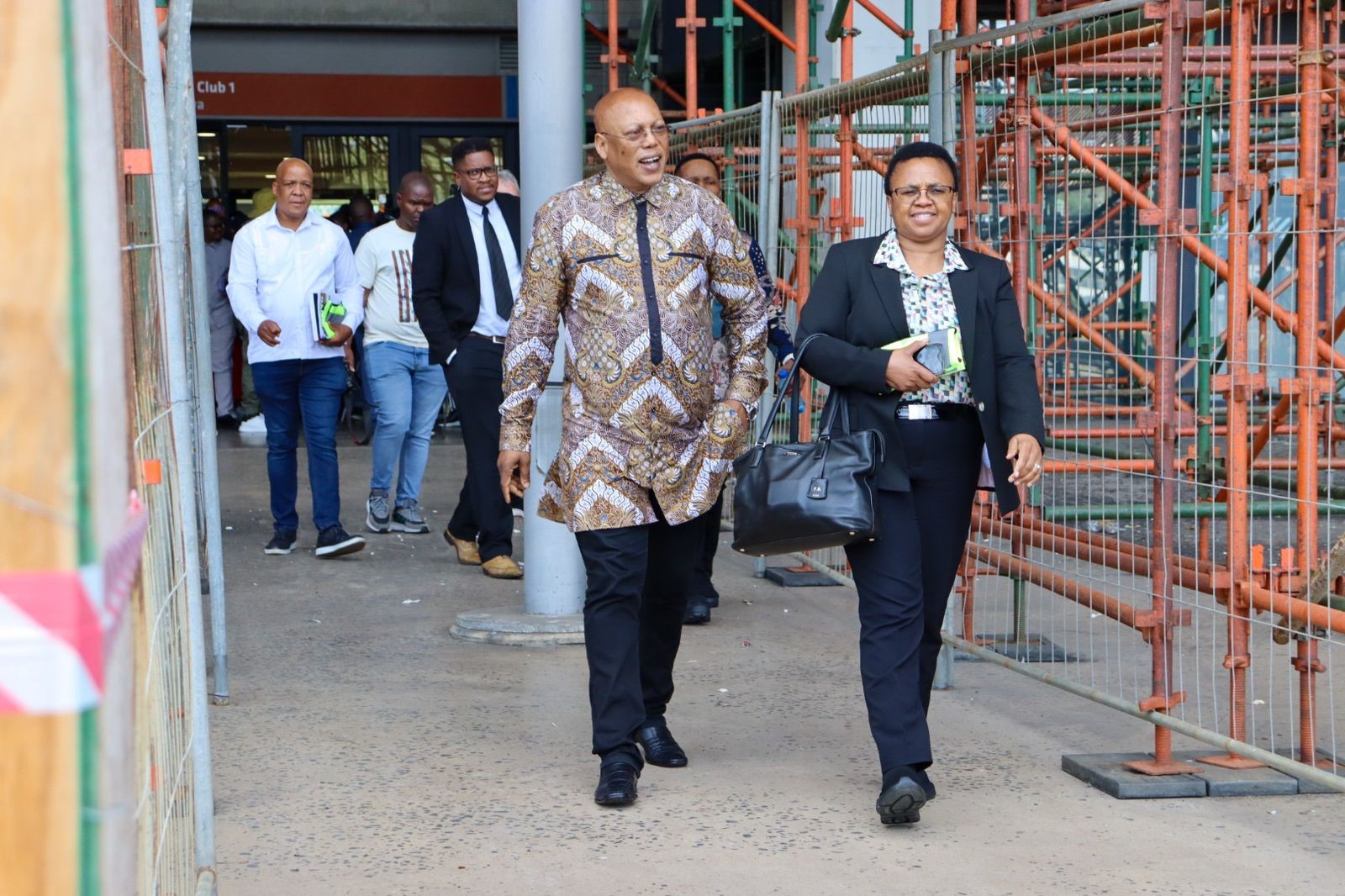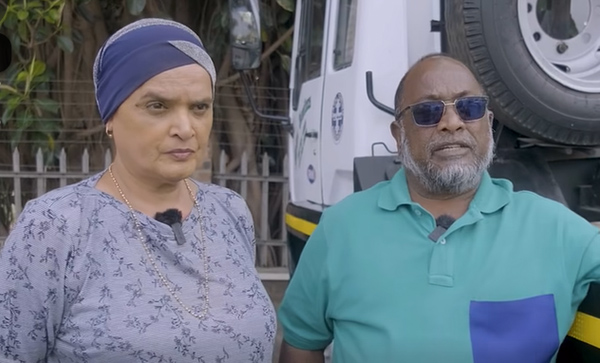AN innovative green building block has been produced using waste material from the construction sector. The block, which can be used to build low-cost houses, is a project of the Department of Science, Tech-nology and Innovation (DSTI) Circular Economy Demonstration Fund aimed at demonstrating proven circular economy interventions, such as, technologies, innovative process improvements, and social inno-vations that have not yet achieved scale or impact in the country.
The Council for Scientific and Industrial Research (CSIR) partnered with Use-It Waste Beneficiation NPC and Key Bricks to demonstrate the prototype. DSTI deputy director-general for socioeconomic innovation partnerships; Dr Mmboneni Muofhe, CSIR executive manager for hosted programmes and Bongani Me-mela presided over the ribbon-cutting ceremony for the newly built demonstration house on 11 April.
Those attending the site visit were guided through the process of manufacturing the innovative building blocks, starting from the crushing of waste glass, and building rubble, to the finished block, and finally the low-cost housing structure.
The site visit provided behind-the-scenes insights into Key Bricks’ operations, material mix ratios, design of structures and equipment used to produce the interlocking block. Use-It and Key Bricks both shared their journey on taking steps to become green in their operations and working closely with the CSIR to test and refine the product concepts through the adoption of circular economy principles.
The green block contains 70% recycled waste content, including crushed waste glass, as well as con-struction and demolition waste. The block itself is 100% recyclable.
What also sets the interlocking block apart is its design, allowing for the building to be easily constructed with limited building experience, and if needed, the structure can be later deconstructed and the blocks reused at another location. The block is designed to interlock similar to children’s building blocks, requir-ing no cement between layers. Each block features internal hollows, which, when stacked, create chan-nels for the installation of electrical and water pipes, reducing the need to cut grooves (also known as ‘chasing’), ensuring that the blocks remain intact. The blocks came from the need to find local markets for waste glass and building rubble in KZN.
“It’s not viable to transport waste glass from KZN to Gauteng for recycling, the margins on this are just too slim, resulting in a lot of this waste remaining uncollected and impacting the environment,” said Belinda Putterill, managing director of Use-it. “We needed to find ways to use glass locally in KZN.” Cities, towns and villages across the country are also plagued with the illegal dumping of building rubble in open spaces. These blocks use crushed waste glass, and construction and demolition waste, thereby reducing the need for conventional virgin materials.
“Not only is building with this innovative block cost-effective, but it also saves construction time and re-quires minimal labour and building experience. The top structure was put up by relatively unskilled labour from foundation stage to the roof within seven days – this is only possible because of the interlock-ing nature of the faceted blocks. By using waste as a resource, this interlocking block can unlock new business opportunities in the construction industry. Local businesses and value chains can benefit from the potential to generate additional revenue streams. It also has the potential to accelerate social relief efforts by addressing the country’s housing backlog, while helping to keep our cities, towns and villages clean,” said CSIR project manager, Aubrey Muswema.
The block-making machine has been demonstrated to the private sector, municipal officials, housing-sector representatives and other SMMEs in the building sector.
Muofhe said, “The work that has been done by all partners to date is commendable in demonstrating the principles of ‘reduce, re-use, recycle’, which in turn compels us to rethink the potential of everything that we use on a daily basis. South Africans have been practising circular economy principles for years, but they did not necessarily label these practices as such. The creativity and innovative mindset to repurpose single-use materials has always been there and simply needed to be unlocked in a systemic and collaborative manner. The green brick is testament to how collaboration among multiple actors such as a science council, small enterprises and government can deliver a product with social, economic, and envi-ronmental benefits. We remain open to the possibility of more partners collaborating with us to demon-strate and scale circular innovations.”
“The circular economy holds enormous potential for South Africa,” says CSIR principal researcher and manager of Circular Innovation South Africa (CISA), Professor Linda Godfrey. CISA is tasked by the DSTI to identify and support innovative circular economy demonstration projects, through the recently launched Circular Economy Demonstration Fund. “The circular economy studies published by the CSIR highlight that while the circular economy is not new to South Africa, we have not achieved the scale for meaning-ful impact. The aim of the Circular Economy Demonstration Fund is to partner universities and science councils with the private sector, to help business and industry demonstrate, de-risk and scale circular innovations, and in so doing, unlock much needed socio-economic opportunities,” said Godfrey.








